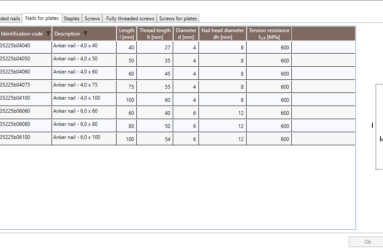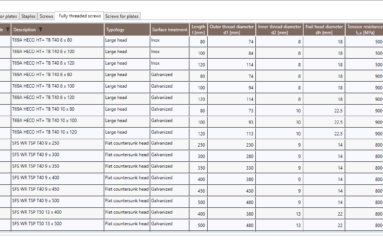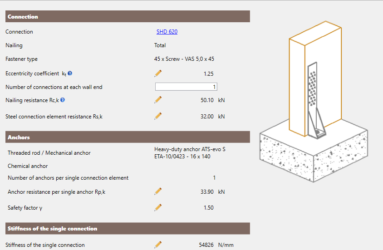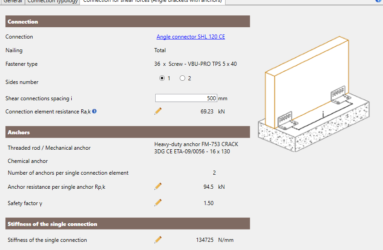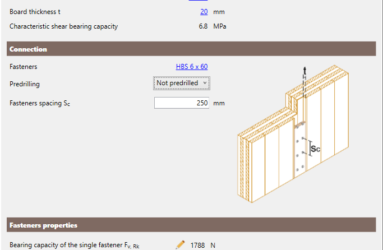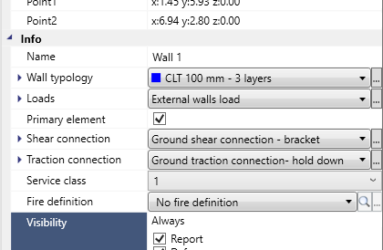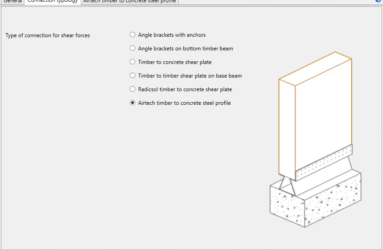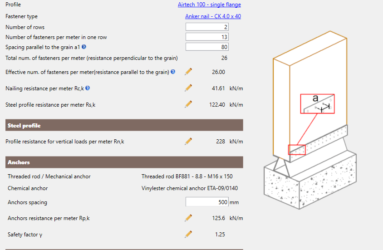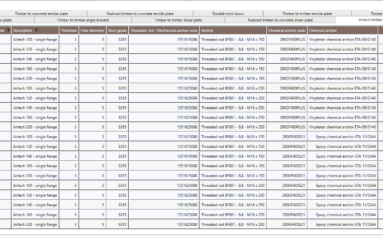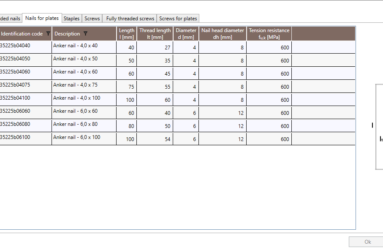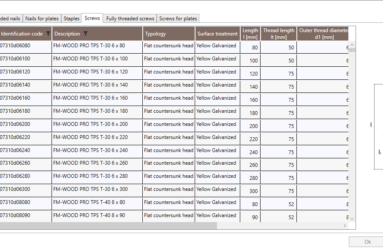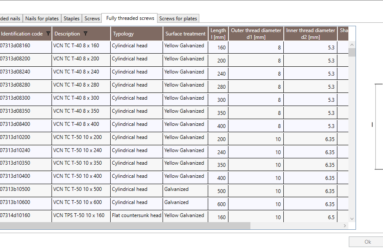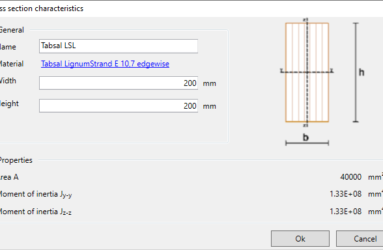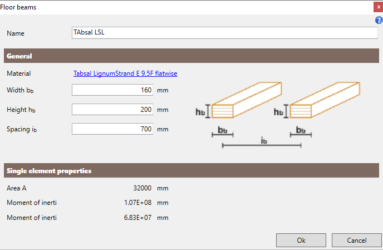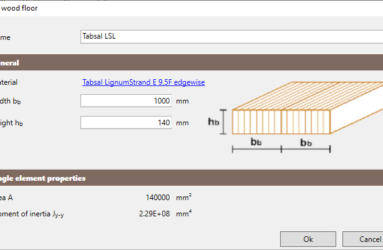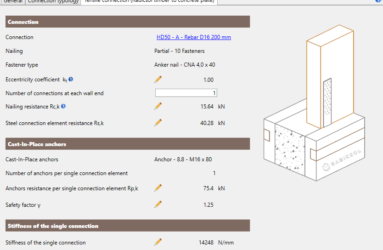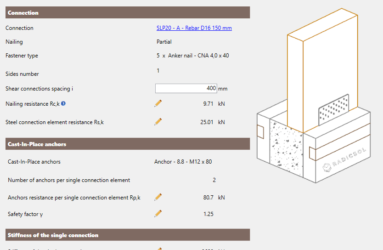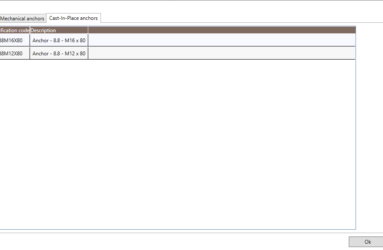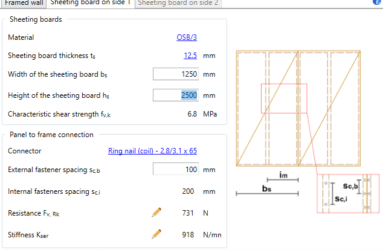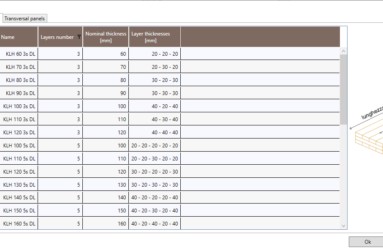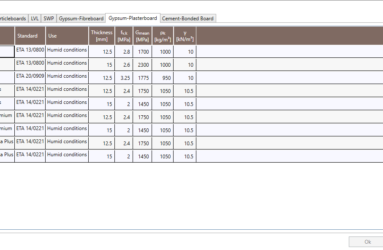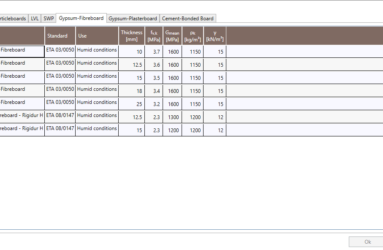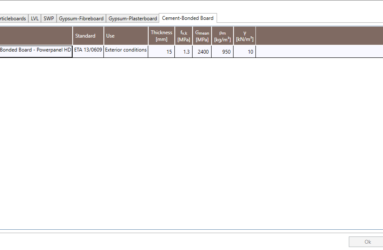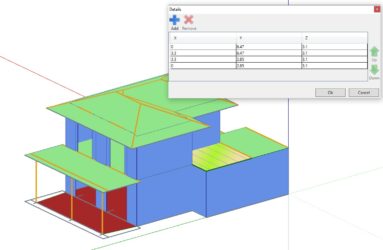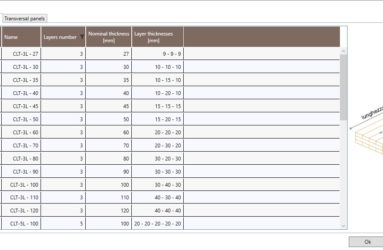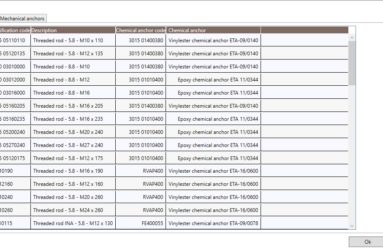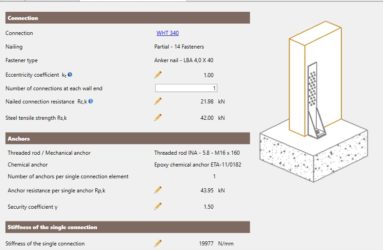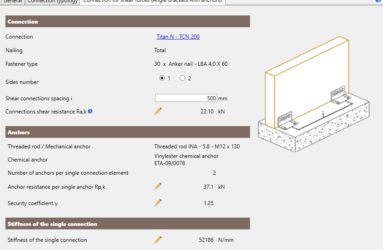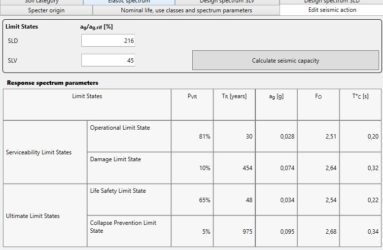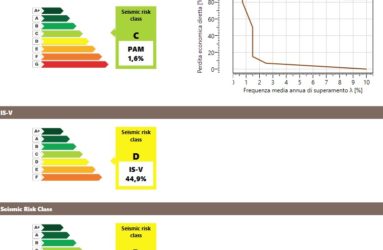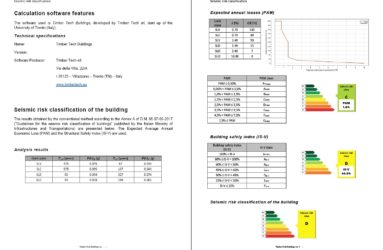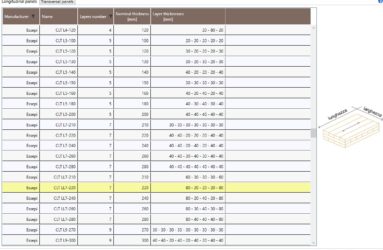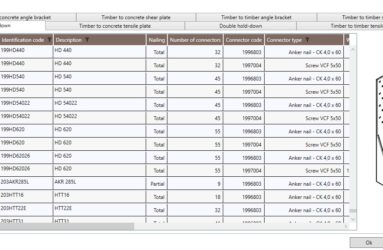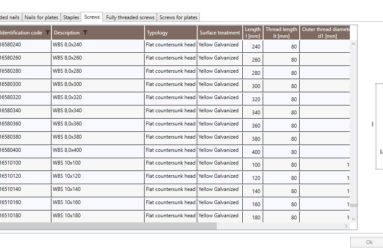In the latest version of the software we added these new features:
- Addition of HecoEFG, Heco Schrauben and SFS fasteners: a selection of fasteners manufactured by HecoEFG, Heco Schrauben e SFS is now available. The selection includes partial threaded screws, fully threaded screws, nails and screws for plates.
- Addition of Friulsider connection elements: Friulsider connection elements are now available. The selection includes hold down, wood-concrete and wood-wood traction plates, wood-concrete and wood-wood angle brackets.
- CLT segmented walls: it is now possible to choose plywood and OSB as the material of the boards of the connection between the panels.
- Export improvement: it is now possible to choose which elements to print in the DXF and IFC export, in the bill of quantities and in the exportation of the reactions in foundation.
- Update of NA Austria, NA Germany and NA Latvia: the load durations and the coefficients relating to the snow and wind load for the Austrian, German and Latvian national annexes have been updated.
- Bug fixing and small improvements.

